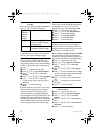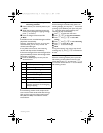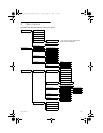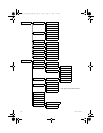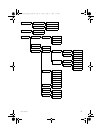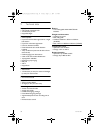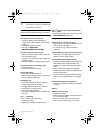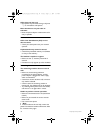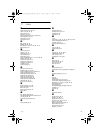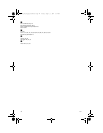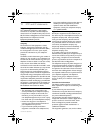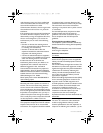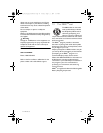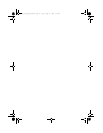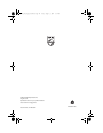
42
FCC and IC statements
radio frequency energy and, if not installed and
used in accordance with the instructions, may
cause harmful interference to radio
communications. However, there is no guarantee
that interference will not occur in a particular
installation.
If this equipment does cause harmful interference
to radio or television reception, which can be
determined by turning the equipment off and on,
the user is encouraged to try to correct the
interference by one or more of the following
measures :
• Reorient or relocate the receiving antenna
(that is, the antenna for radio or television that
is “receiving” the interference).
• Reorient or relocate and increase the
separation between the telecommunications
equipment and receiving antenna.
• Connect the telecommunications equipment
into an outlet on a circuit different from that to
which the receiving antenna is connected.
If these measures do not eliminate the
interference, please consult your dealer or an
experienced radio / television technician for
additional suggestions. Also, the Federal
Communications Commission has prepared a
helpful booklet, “How To Identify and Resolve
Radio/TV Interference Problems”. This booklet is
available from the U.S. Government Printing
Office,Washington, D.C. 20402.
Please specify stock number 004-000-00345-4
when ordering copies.
Noise
Electrical pulse noise is present at one time or
another. This is most intense during electrical
storms. Certain kinds of electrical equipment,
such as light dimmers, fluorescent bulbs, motors,
fans, etc., also generate pulse noise. Because radio
frequencies are susceptible to this, you may on
occasion hear pulse noise through the receiver.
This is usually only a minor annoyance and should
not be interpreted as a defect of the unit.
FCC RF Radiation Exposure Statement
This equipment complies with FCC RF radiation
exposure limits set forth for an uncontrolled
environment. This equipment should be installed
and operated with a minimum distance of 20
centimeters between the radiator and your body.
This transmitter must not be co-located or
operating in conjunction with any other antenna
or transmitter.
For hand held operation, this phone has been
tested and meets the FCC RF exposure
guidelines. Use of other accessories may not
ensure compliance with FCC RF exposure
guidelines.
Hearing Aid Compatibility (HAC)
This telephone system meets FCC and Industry
Canada standards for Hearing Aid Compatibility.
Privacy
Privacy of communications may not be ensured
when using this telephone.
Additional Information
I.C. Notice
Terminal Equipment
NOTICE :This equipment meets the applicable
Industry Canada Terminal Equipment Technical
Specifications.
This is confirmed by the registration number. The
abbreviation, IC, before the registration number
signifies that registration was performed based on
a Declaration of Conformity indicating that
Industry Canada technical specifications were
met. It does not imply that Industry Canada
approved the equipment.
NOTICE :The Ringer Equivalence Number (REN)
for this terminal equipment is marked on the
equipment itself. The REN assigned to each
terminal equipment provides an indication of the
maximum number of terminals allowed to be
connected to a telephone interface. The
termination on an interface may consist of any
combination of devices subject only to the
requirement that the sum of the Ringer
Equivalence Numbers of all the devices does not
exceed five.
Radio Equipment
The term “IC:” before the radio certification
number only signifies that Industry Canada
technical specifications were met. Operation is
subject to the following two conditions : (1) this
CD645_IFU_US_English.book Page 42 Friday, August 3, 2007 5:10 PM



